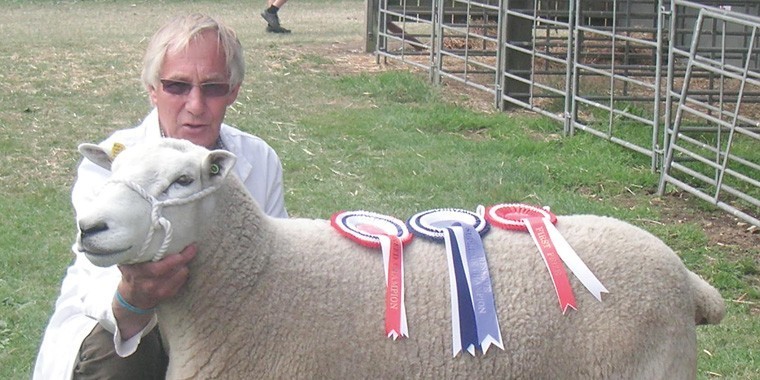OK there are times when things do get a little tricky, difficult even, but yesterday morning was just one of those occasions when it was warm and sunny with a clear blue sky and absolute peace and tranquility; the ewes were all laying down, quietly cudding as were most of the lambs, some were flat out, basking in the warm sunshine.
I always find the latter a little unnerving, particularly with older sheep, simply because at a casual glance they look as if they are dead. A couple of my ram tegs caught me out at the beginning of the week. Eight out of the ten came running as soon as they saw me, in full expectation of their small daily feed, provided principally just to keep them sweet and easy to handle. But two remained absolutely flat out and motionless, even when I whistled as I was a little concerned.
It wasn’t until I was within about a metre of them that they both suddenly woke up, quite startled, leapt to their feet and rushed off to join their mates. They were both fast asleep – not a thing you catch them doing too often – and enjoying the early morning sunshine. I’m sure that most sheep producers have been through that awful feeling, from time to time, when your first thought is that you have a fatality to deal with.
Anyway, to get back to where I was, i.e. being in a privileged position. I was with a group of my sheep students and one of them commented on how lucky we were and how therapeutic it was just being able to take a little time to enjoy the scene of peace and tranquility in front of us. It’s something that we often forget and take for granted. There are, I’m sure, millions of people, across the country, confined to stuffy offices or factories all their working days, who would simply love to be in that position for just a short time.
Not that we were there just to enjoy the sheep and the peace and quiet. We were marking out a plot of grassland ready for drilling with some forage crops as part of a student assignment. In addition to marking out we were also looking at soil profiles which came as quite a surprise to the students, more accustomed to seeing soil profiles in an arable situation with all the associated problems. They were amazed at how healthy the soil was.
The profiles clearly showed an excellent soil structure, a lovely sweet earthy smell, evidence of lots of earthworms and grass roots still present in the bottom of the pit at a depth of 30 centimetres or more, as well as a very dry surface layer of eight to 10 cm. The soil profiles certainly convinced me that the decision to direct drill, taken with the students, was the correct one. It would be a sin to destroy what decades of permanent pasture had done for the soils and soil health.
As time goes on I am more and more convinced that our seeming obsession with ploughing in the UK is not always entirely justified. There is some excellent work being done by producers in the UK, Europe and particularly the United States that has gone well beyond min-till to almost zero till – often in conjunction with the use of cover crops – which is showing some very impressive results in terms of soil health, input reduction and increased crop yields.
We will be direct drilling with the help of a local farmer a range of forage crops to enable the students to monitor their establishment, growth and eventually use over the next few months. And not just the more traditional forage crops. We will have forage rape, kale and stubble turnips. But, in addition, we will also be growing rape/kale hybrid, sainfoin, chicory and plantain (ribgrass); at the same time, we will be over sowing with a good herbal, species rich, sheep ley to grow on once the forage crops have been grazed.
In addition to providing a good teaching resource for students in the short term, I hope it will also encourage them to be a little more imaginative in their choice of forage crops once they get out into the industry. We do tend to be rather conservative in our use of forages in the UK, with many producers not thinking any further than grass, which I must admit is the easy option. We are rather too willing to resort to conserved forages and concentrate feeding to make up for any deficits in grass production, which can often be in the middle of a dry summer, not just in the winter.
We have in our armoury a tremendous range of forage crops to enable us to extend the grazing season into the driest of summers and well into the winter, almost all of which can be direct harvested (i.e. grazed), and some capable of producing excellent daily live weight gains of 300 to 400 grams a day for lambs.




